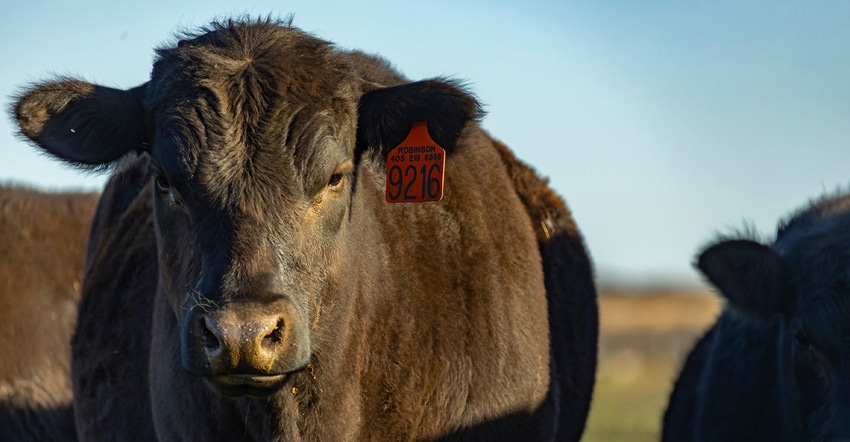Get full benefit of higher cattle placement weights in feedlots
Consider whether USDA's Livestock Risk Protection insurance program would be beneficial to your operation.

The rising feedlot cost of gain in the southern Great Plains should have cattle producers considering economic opportunities for operations in forage-based stocker and backgrounding programs, said Oklahoma State University Extension experts.
Cost of gain, or the expense of gaining a pound of livestock bodyweight, involves several critical factors such as feed costs, flesh condition, animal genetics, weather and cattle health. When grain prices rise and cost of gain increases – as is currently the case – feedlot operators shift their favor to heavier-weight cattle.
“It’s all about adding value, though the producer still will need to determine the price needed to sell his or her fed cattle to break even on the transaction,” said Paul Beck, OSU Extension beef cattle specialist and holder of the university’s Dennis and Marta White Endowed Chair in Animal Science. “Determining the break-even price is just part of raising cattle, no matter the size or type of operation.”
Key questions for producers to ask include:
How will the cattle be raised? What will they be fed, and what are the associated costs?
Are there additional expenses relative to maintaining animal health and condition?
What resources are available in terms of needed skills, labor and facilities?
Does taking advantage of the current opportunity derail value projected to be gained from previous operational plans? For example, if feeding the livestock on wheat pasture that was originally intended to be harvested for hay or grain, is it economically worth the switch?
“Look at growth-promoting technologies such as implants and ionophores,” Beck said. “The value of such technologies tends to increase whenever the value of gain increases. Evaluate supplementation programs being used. If the added cost of gain is less than the added value of gain, then that is a good economic decision.”
Fact sheets detailing research-based information about retained ownership, determining break-even costs, and cattle management practices and technologies are available online through OSU Extension and at all OSU Extension county offices. Livestock and grain market information and analysis, as well as cattle management and production insights, are provided weekly on the agricultural television show SUNUP.
Cattle producers looking to retain ownership and graze some or all of their livestock through the summer should determine if they want to take advantage of the U.S. Department of Agriculture’s Livestock Risk Protection insurance program, said Scott Clawson, OSU Extension area agricultural economist for northeastern Oklahoma.
“LRP insurance is a per-head product and acts as a price floor,” Clawson said. “Producers can buy the insurance at different levels of coverage. It’s a relatively quick and easy management option, though producers always need to consider how a policy works in conjunction with their other risk management strategies.”
The program’s insurable level is up to 6,000 head per endorsement and a total of 12,000 head per year. Length of coverage can vary from 13 to 52 weeks, though the number of weeks is set by the USDA depending on the endorsement selected. For example, a producer might select the 17-week option, the 26-week option or the 43-week option.
Coverage levels vary from 70% to 100% of the expected ending value of the livestock. LRP insurance can be purchased through a livestock insurance agent.
About the Author(s)
You May Also Like



